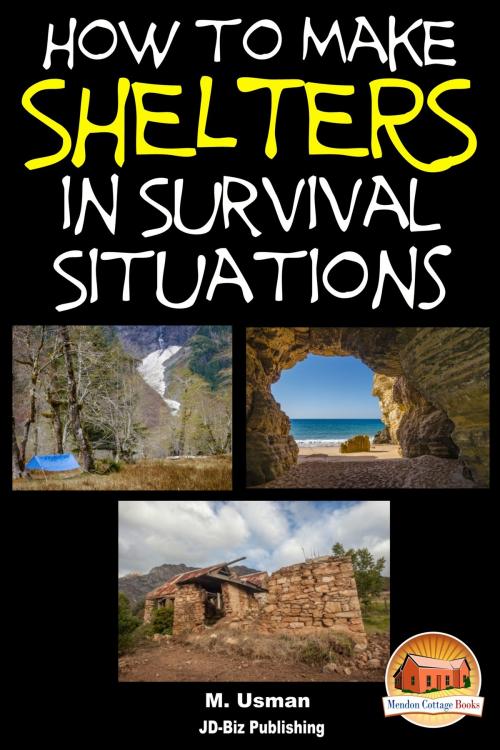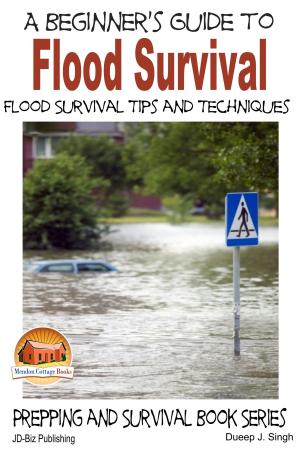| Author: | M. Usman | ISBN: | 9781310240799 |
| Publisher: | Mendon Cottage Books | Publication: | June 2, 2015 |
| Imprint: | Smashwords Edition | Language: | English |
| Author: | M. Usman |
| ISBN: | 9781310240799 |
| Publisher: | Mendon Cottage Books |
| Publication: | June 2, 2015 |
| Imprint: | Smashwords Edition |
| Language: | English |
Table of Contents
Chapter 1: Introduction
Chapter 2: Natural Shelters
2.1 Shelter from Caves
2.2 Snow Caves and Shelters
Chapter 3: Wood Shelters
3.1 The Dome Shelters
3.2 Ramada Shelters
3.3 Teepee/Tipi
Chapter 4: Tarp Shelters
Chapter 5: Debris Hut
Chapter 6: Conclusion
6.1 Factors
Author Bio
Publisher
Introduction
A shelter, shade, or house has been a source of protection and comfort for human kind ever since it first realized the benefits of being under a shelter. In many fronts, a shelter is a very fundamental need of living creatures and it has a psychological and emotional importance and value along with physical and material. Men started building shelters in the earliest times of their existence and since then have been developing the most modern and evolutionary methods of building homes with developing and evolving mental models along with advanced technology.
When in the wilderness, shelter is home, a base point to rest, and protection from rain, snow, cold, wild animals, storms, thunders, and sliding lands. Shelter is an unparalleled source of comfort whether you are out in a jungle for an adventure trip or trapped with your friends in an island full of palms and coconuts. Since the primitive ages, creation of shade and formation of a base area to fall upon has been a human norm. The idea of creating a home has nurtured since the beginning of human times on earth, as it was inculcated in man by nature. Creating shelter in the emergency situation can even avoid life threatening situations and provide a point from where the navigation and communication can become easy. Being in possession of the ability and skill set to build a water proof safe shelter is a blessing and drastically increaseschances of survival until aid is received. Creating a shade cannot only help protect you from unkind circumstances and adverse situations, but also benefit others who are accompanying you.
Temporary arrangements can also be made by nature if you feel lethargic or have drained yourself with all day tracking. Caves, pits, snow, and dense woods can be your best partners as natural and dependable shelters in cases where building material is not easily available or has been out of reach. However, such lucky opportunities and not available commonly and that is where people like me start writing such kinds of books. Shelter making is knowledge and an art that we shall discuss in detail through the help of this book. We will explain in detail different ways to create and protect shelters and the material required to accomplish this apparently challenging task.
Location of shelter is very important; you would not want to lie down next to a snake hole. Select an area to build shelter where you can get ample space to lie down flat, comfortably, without apprehensions. Shelter should be developed near the source of building material and water and away from sliding stones, pooling water, and insects. Make your shelter sufficient in size to fit you inside. It should not be very big since it will take more time, material, and effort to construct and should not be so small so that you would need to squeeze yourself to fit in. The best way is to lie down flat and measure your height with the help of a stick or just take a rough measurement with your hands after marking ground from head to toes. Start building your shelter accordingly once you have a good wilderness judgment of your height. A luxury sized shelter is also not advisable because more vacant space inside will not conserve heat and you may feel cold. An effective adventure shade, which is fit enough, will also conserve body heat and would not allow cold to come inside.
Table of Contents
Chapter 1: Introduction
Chapter 2: Natural Shelters
2.1 Shelter from Caves
2.2 Snow Caves and Shelters
Chapter 3: Wood Shelters
3.1 The Dome Shelters
3.2 Ramada Shelters
3.3 Teepee/Tipi
Chapter 4: Tarp Shelters
Chapter 5: Debris Hut
Chapter 6: Conclusion
6.1 Factors
Author Bio
Publisher
Introduction
A shelter, shade, or house has been a source of protection and comfort for human kind ever since it first realized the benefits of being under a shelter. In many fronts, a shelter is a very fundamental need of living creatures and it has a psychological and emotional importance and value along with physical and material. Men started building shelters in the earliest times of their existence and since then have been developing the most modern and evolutionary methods of building homes with developing and evolving mental models along with advanced technology.
When in the wilderness, shelter is home, a base point to rest, and protection from rain, snow, cold, wild animals, storms, thunders, and sliding lands. Shelter is an unparalleled source of comfort whether you are out in a jungle for an adventure trip or trapped with your friends in an island full of palms and coconuts. Since the primitive ages, creation of shade and formation of a base area to fall upon has been a human norm. The idea of creating a home has nurtured since the beginning of human times on earth, as it was inculcated in man by nature. Creating shelter in the emergency situation can even avoid life threatening situations and provide a point from where the navigation and communication can become easy. Being in possession of the ability and skill set to build a water proof safe shelter is a blessing and drastically increaseschances of survival until aid is received. Creating a shade cannot only help protect you from unkind circumstances and adverse situations, but also benefit others who are accompanying you.
Temporary arrangements can also be made by nature if you feel lethargic or have drained yourself with all day tracking. Caves, pits, snow, and dense woods can be your best partners as natural and dependable shelters in cases where building material is not easily available or has been out of reach. However, such lucky opportunities and not available commonly and that is where people like me start writing such kinds of books. Shelter making is knowledge and an art that we shall discuss in detail through the help of this book. We will explain in detail different ways to create and protect shelters and the material required to accomplish this apparently challenging task.
Location of shelter is very important; you would not want to lie down next to a snake hole. Select an area to build shelter where you can get ample space to lie down flat, comfortably, without apprehensions. Shelter should be developed near the source of building material and water and away from sliding stones, pooling water, and insects. Make your shelter sufficient in size to fit you inside. It should not be very big since it will take more time, material, and effort to construct and should not be so small so that you would need to squeeze yourself to fit in. The best way is to lie down flat and measure your height with the help of a stick or just take a rough measurement with your hands after marking ground from head to toes. Start building your shelter accordingly once you have a good wilderness judgment of your height. A luxury sized shelter is also not advisable because more vacant space inside will not conserve heat and you may feel cold. An effective adventure shade, which is fit enough, will also conserve body heat and would not allow cold to come inside.















